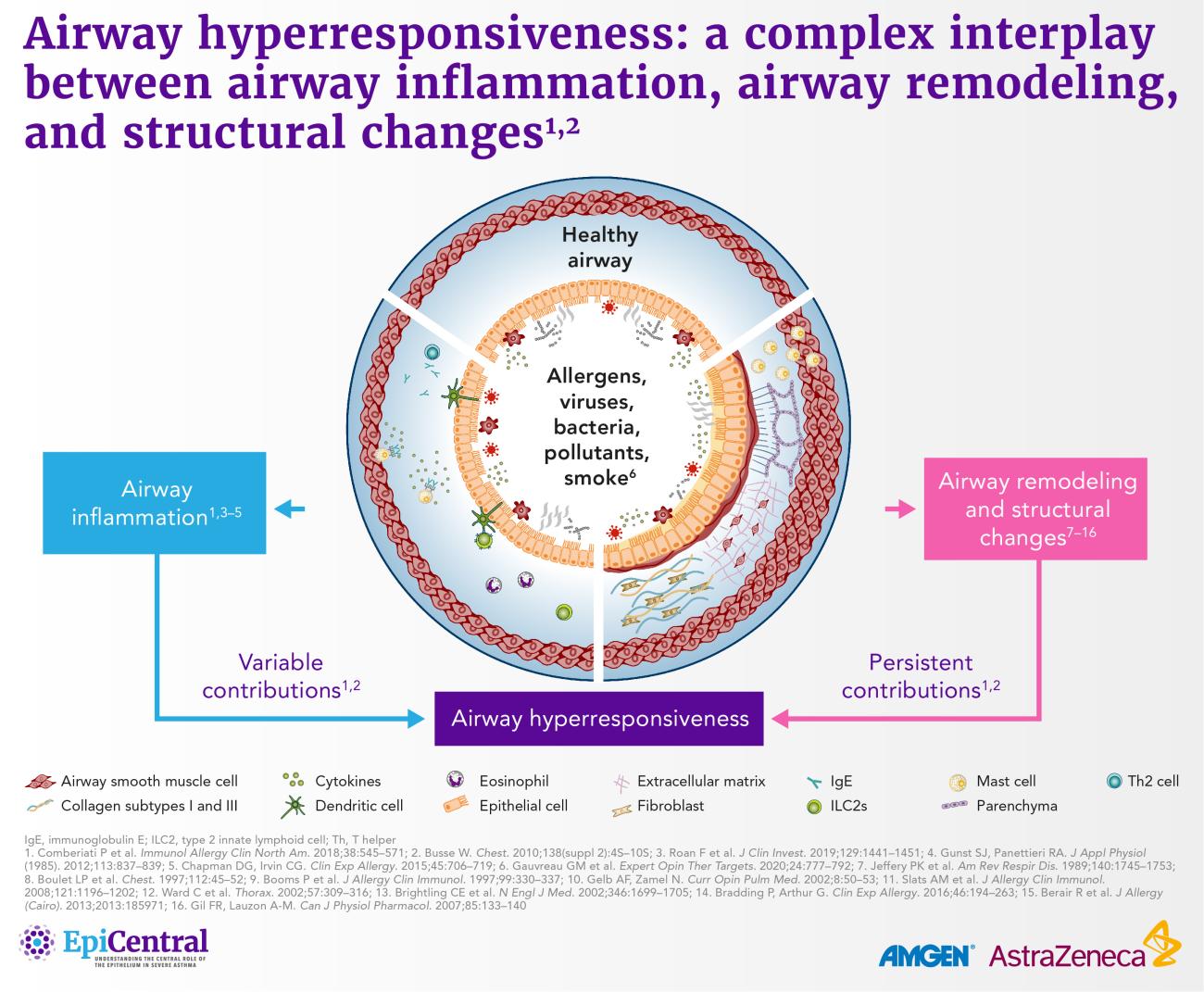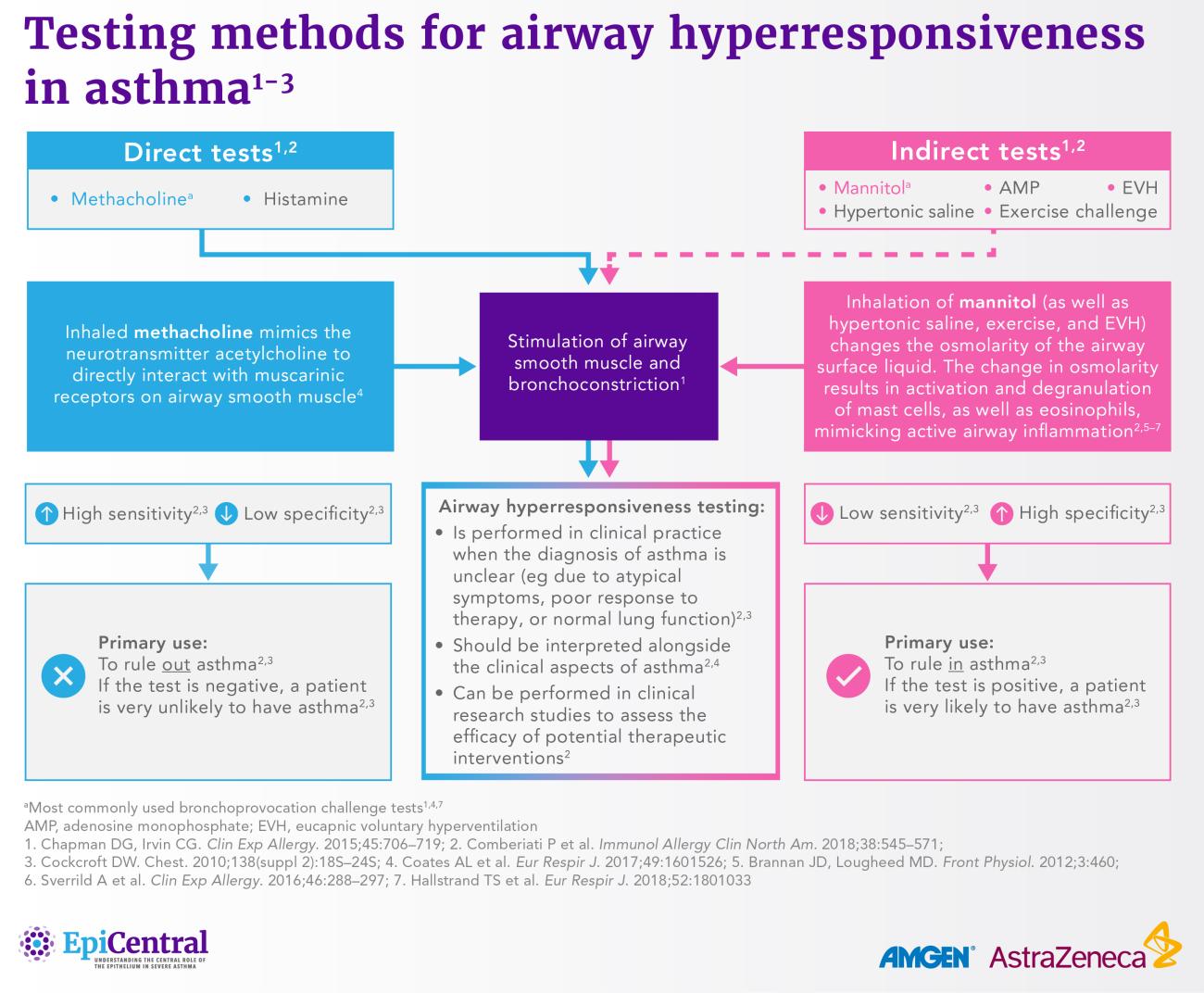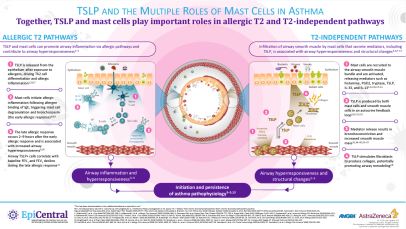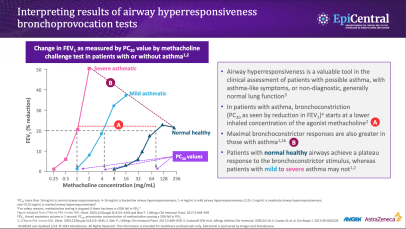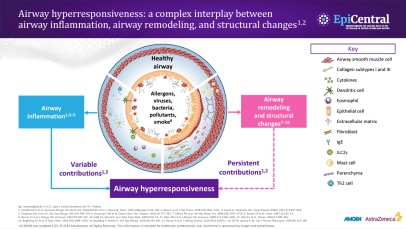References
1. Chapman DG, Irvin CG. Clin Exp Allergy. 2015;45:706–719. 2. Berair R, et al. J Allergy (Cairo). 2013;2013:185971. 3. Comberiati P, et al. Immunol Allergy Clin North Am. 2018;38:545–571. 4. Borak J, Lefkowitz RY. Occup Med (Lond). 2016;66:95–105. 5. Allakhverdi Z, et al. J Allergy Clin Immunol. 2009;123:958–960. 6. Gunst SJ, Panettieri RA. J Appl Physiol (1985). 2012;113:837–839. 7. Porsbjerg CM, et al. Eur Respir J. 2020;56:2000260. 8. Busse WW. Chest. 2010;138(suppl 2):4S–10S. 9. Crimi E, et al. Am J Respir Crit Care Med. 1998;157:4–9. 10. Jeffery PK, et al. Am Rev Respir Dis. 1989;140:1745–1753. 11. Boulet LP, et al. Chest. 1997;112:45–52. 12. Booms P, et al. J Allergy Clin Immunol. 1997;99:330–337. 13. Gelb AF, Zamel N. Curr Opin Pulm Med. 2002;8:50–53. 14. Slats AM, et al. J Allergy Clin Immunol. 2008;121:1196–1202. 15. Ward C, et al. Thorax. 2002;57:309–316. 16. Heijink IH, et al. Allergy. 2020;75:1902–1917. 17. Fehrenbach H, et al. Cell Tissue Res. 2017;367:551–569. 18. Hough KP, et al. Front Med (Lausanne). 2020;7:191. 19. Gil FR, Lauzon AM. Can J Physiol Pharmacol. 2007;85:133–140. 20. Bradding P. Eur Respir J. 2007;29:827–830. 21. Hollins F, et al. J Immunol. 2008;181:2772–2780. 22. John AE, et al. J Immunol. 2009;183:4682–4692. 23. Kaur D, et al. J Immunol. 2010;185:6105–6114. 24. Moiseeva EP, et al. PLoS One. 2013;8:e61579. 25. Kaur D, et al. Chest. 2012;142:76–85. 26. Suto W, et al. Int J Mol Sci. 2018;19:3036. 27. Robinson DS. J Allergy Clin Immunol. 2004;114:58–65. 28. Brightling CE, et al. N Engl J Med. 2002;346:1699–1705. 29. Kaur D, et al. Allergy. 2015;70:556–567. 30. Moir LM, et al. J Allergy Clin Immunol. 2008;121:1034–1039. 31. Woodman L, et al. J Immunol. 2008;181:5001–5007. 32. Tatler AL, et al. J Immunol. 2011;187:6094–6107. 33. Saunders R, et al. J Allergy Clin Immunol. 2009;123:376–384. 34. Saunders R, et al. Clin Transl Immunology. 2020;9:e1205. 35. Singh SR, et al. Allergy. 2014;69:1189–1197. 36. Begueret H, et al. Thorax. 2007;62:8–15. 37. Siddiqui S, et al. J Allergy Clin Immunol. 2008;122:335–341. 38. Bonvini SJ, et al. Eur Respir J. 2020;56:1901458. 39. Lai Y, et al. J Allergy Clin Immunol. 2014;133:1448–1455. 40. Altman MC, et al. J Clin Invest. 2019;129:4979–4991. 41. Al-Shaikhly T, et al. Eur Respir J. 2022;60:2101865. 42. Rayees S, Din I. Asthma: pathophysiology, herbal and modern therapeutic interventions. Cham: Springer International Publishing. 2021. 43. in’t Veen JC, et al. Am J Respir Crit Care Med. 1999;160:93–99. 44. Leuppi JD, et al. Am J Respir Crit Care Med. 2001;163:406–412. 45. Rijcken B, Weiss ST. Am J Respir Crit Care Med. 1996;154:S246–S249. 46. Sears MR, et al. N Engl J Med. 2003;349:1414–1422. 47. Cockcroft DW, et al. Clin Allergy. 1977;7:235–243. 48. Boulet LP, et al. J Allergy Clin Immunol. 1983;71:399–406. 49. Reddel HK, et al. Eur Respir J. 2000;16:226–235. 50. Coates AL, et al. Eur Respir J. 2017;49:1601526. 51. Fowler SJ, et al. Am J Respir Crit Care Med. 2000;162:1318–1322. 52. Vandenplas O, et al. Eur Respir J. 2014;43:1573–1587. 53. Weiler JM, et al. J Allergy Clin Immunol. 2016;138:1292–1295. 54. O’Byrne PM, Inman MD. Chest. 2003;123:411S–416S. 55. Hallstrand TS, et al. Eur Respir J. 2018;52:1801033.
